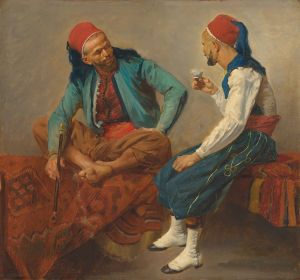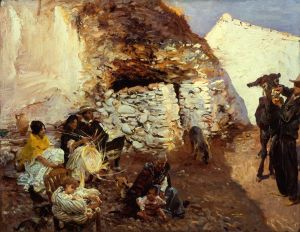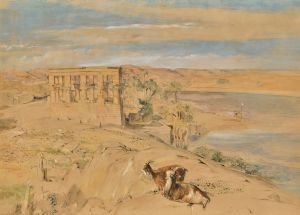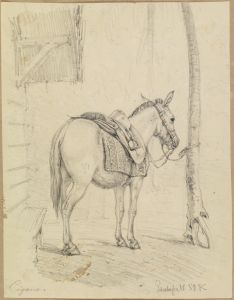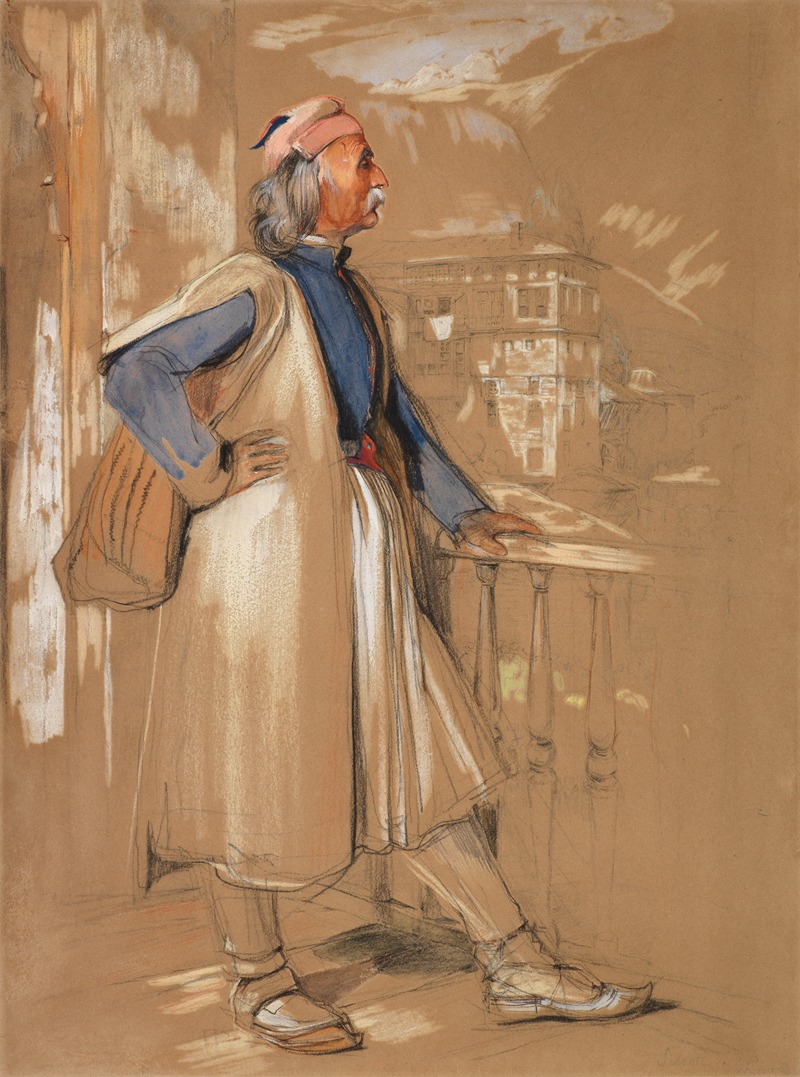
Suliote
A hand-painted replica of John Frederick Lewis’s masterpiece Suliote, meticulously crafted by professional artists to capture the true essence of the original. Each piece is created with museum-quality canvas and rare mineral pigments, carefully painted by experienced artists with delicate brushstrokes and rich, layered colors to perfectly recreate the texture of the original artwork. Unlike machine-printed reproductions, this hand-painted version brings the painting to life, infused with the artist’s emotions and skill in every stroke. Whether for personal collection or home decoration, it instantly elevates the artistic atmosphere of any space.
John Frederick Lewis was a British Orientalist painter known for his detailed and vibrant depictions of Middle Eastern and Mediterranean scenes. One of his notable works is "Suliote," which captures a moment from the Greek War of Independence, a conflict that took place from 1821 to 1829 as Greece sought to gain independence from the Ottoman Empire.
The term "Suliote" refers to the Souliotes, a group of people from the region of Souli in Epirus, Greece. They were known for their fierce resistance against Ottoman rule and played a significant role in the Greek War of Independence. The Souliotes were celebrated for their bravery and are often depicted in art and literature as symbols of Greek resistance and heroism.
Lewis's painting "Suliote" is an example of his interest in historical and cultural subjects, reflecting the 19th-century European fascination with the Orient and the exotic. His works often combined meticulous attention to detail with a romanticized view of his subjects, a characteristic feature of Orientalist art. Lewis was known for his ability to capture the intricate details of costumes, architecture, and landscapes, which is evident in "Suliote."
The painting likely portrays a scene involving the Souliotes, capturing their traditional attire and the dramatic landscapes of their homeland. Lewis's work is characterized by its vibrant colors and intricate details, which bring the scene to life and provide a glimpse into the cultural and historical context of the time. The painting serves as both a historical document and a work of art, offering insight into the struggles and resilience of the Souliotes during the Greek War of Independence.
John Frederick Lewis spent several years traveling in the Middle East and the Mediterranean, which greatly influenced his artistic style and subject matter. His experiences in these regions allowed him to create works that were both authentic and imaginative, blending his observations with his artistic vision. "Suliote" is a testament to Lewis's skill as a painter and his ability to convey the spirit of a people and a moment in history.
While specific details about the painting "Suliote" may be limited, it remains an important piece within Lewis's body of work and the broader context of Orientalist art. The painting reflects the 19th-century European interest in the cultures and histories of the Middle East and Mediterranean regions, as well as the romanticized view of these areas that was prevalent at the time.
Overall, "Suliote" by John Frederick Lewis is a significant work that captures the essence of the Souliotes and their role in the Greek War of Independence. Through his detailed and vibrant portrayal, Lewis offers viewers a window into a pivotal moment in history, celebrating the courage and resilience of a people fighting for their freedom.






